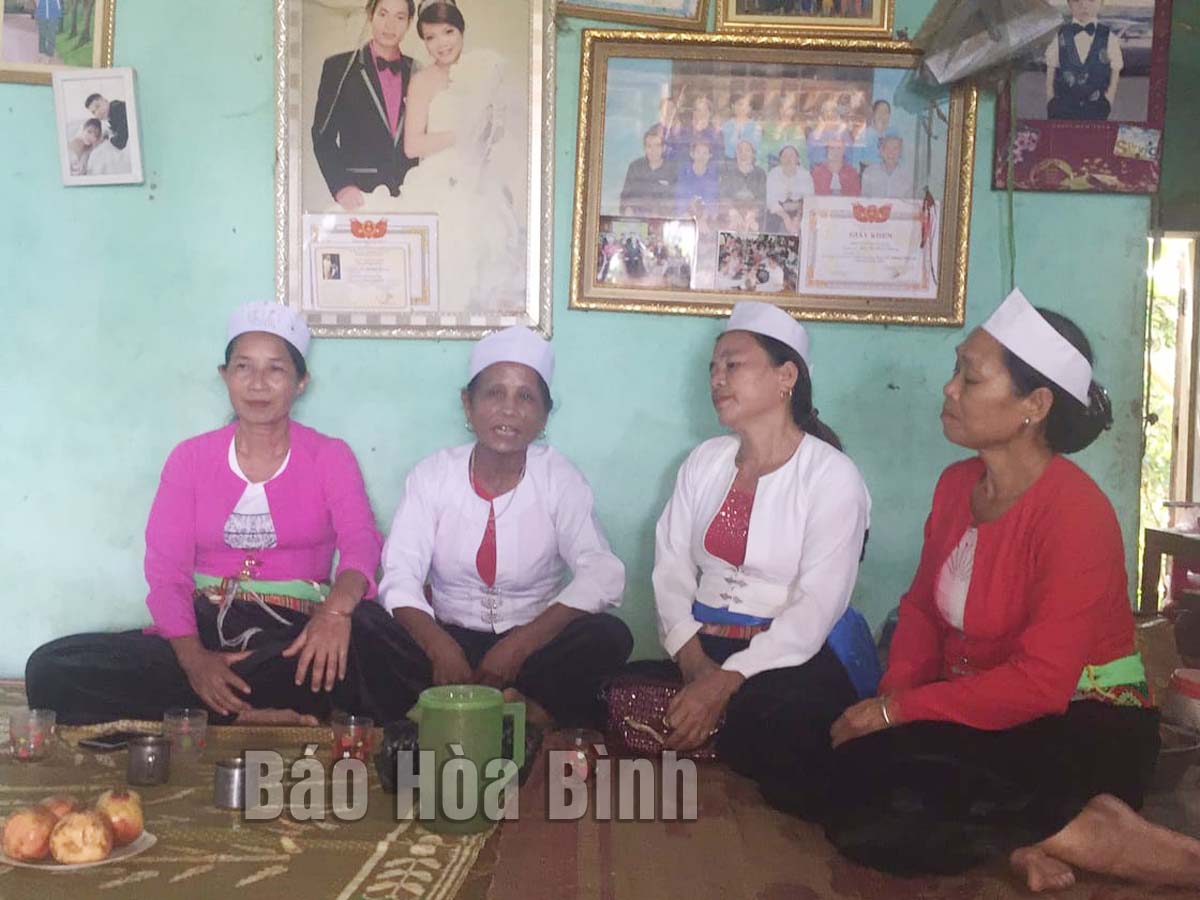
(HBO) - For more than two years, Muong Khoi folk singing club in Bai hamlet of An Nghia commune (Lac Son) has regularly organised singing during festivals, full-moon days or simply in meetings of its members.

A
meeting of the Muong Khoi folk singing club in An Nghia commune (Lac Son).
Bui Van Chinh, head of the club, said that the
club has 17 members. Before the COVID-19 pandemic, the club was very active, as
its members often met and sang together on normal days, along with local
festivals. In addition, the club also organised exchanges with Muong folk
singing clubs in the district and Thanh Hoa and Ninh Binh provinces. Due to the
complicated developments of the pandemic, large gatherings are banned, so the
club members meet in small groups to maintain practice. Besides the Muong Khoi
folk singing club, Lac Son district also sees dozens of other clubs with
hundreds of members.
Thanks to the Resolution of the fifth plenum of
the eighth Party Central Committee (Session VIII) on preserving and promoting
national cultural identities, Muong folk singing has received more and more
attention, becoming a highlight in festivals, contests and mass art shows.
Many artisans who are dedicated to the ancient
Muong folk songs have collected, recorded, and posted videos on Youtube
channel. The most typical is artisan Bui Huy Vong in Huong Nhuong commune.
Artisan Vong said that each type of performance
has its own strengths. Today, going around the district’s villages, hamlets,
and fields, people can hear Muong folk singing on TVs, smart phones and radios.
Some families have invited artisans to sing at weddings, tomb-sweeping
festival, and housewarming parties. This proves that the love for Muong folk
singing is still very deep among local people. Muong people-living areas in
Thanh Hoa province are also excited when they invite Lac Son district’s Muong
folk singing clubs to exchange.
With regular activities, Muong folk singing
clubs are gradually bringing folk songs back to people's daily lives. These
models have also made an important contribution to the preservation and
development of folk songs, folk dances and the unique cultural identity of the
Muong ethnic community in Hoa Binh province.
With an increasingly vibrant and widespread emulation movement aimed at building cultured residential areas and cultured families, Yen Thuy District has been making steady progress toward improving both the material and spiritual well-being of its people, while fostering a civilized, prosperous, beautiful, and progressive community.
Once lacking recreational spaces and community facilities, Residential Group 2 in Quynh Lam Ward (Hoa Binh City) has recently received attention for the construction of a new, spacious, and fully equipped cultural house. The project followed the model of state support combined with public contributions in both labor and funding.
The "All people unite to build cultural life" movement, which has been effectively integrated with Kim Boi district’s socio-economic development goals, is fostering a lively spirit of emulation across local residential areas, hamlets, villages, public agencies, and enterprises. In addition, through the initiative, traditional cultural values are being preserved and promoted, while community solidarity and mutual support in poverty reduction and economic development are being strengthened.
A working delegation of the Hoa Binh provincial People’s Committee led by its Permanent Vice Chairman Nguyen Van Toan on June 11 inspected the progress of a project to build the Mo Muong Cultural Heritage Conservation Space linked to tourism services in Hop Phong commune, Cao Phong district.
Born and growing in the heroic land of Muong Dong, Dinh Thi Kieu Dung, a resident in Bo town of Kim Boi district, in her childhood was nurtured by the sweet lullabies of her grandmother and mother. These melodies deeply imprinted on her soul, becoming an inseparable part of her love for her ethnic group's culture. For over 20 years, this love for her hometown has driven Dung to research, collect, and pass down the cultural values of the Muong people to future generations.
In the final days of May, the Ethnic Art Troupe of Hoa Binh Province organized performances to serve the people in remote, mountainous, and particularly disadvantaged areas within the province. These were not just ordinary artistic shows, but they were the meaningful journeys aimed at spreading cultural values, enhancing the spiritual life of the people and contributing to the preservation of ethnic minority cultural identities.



